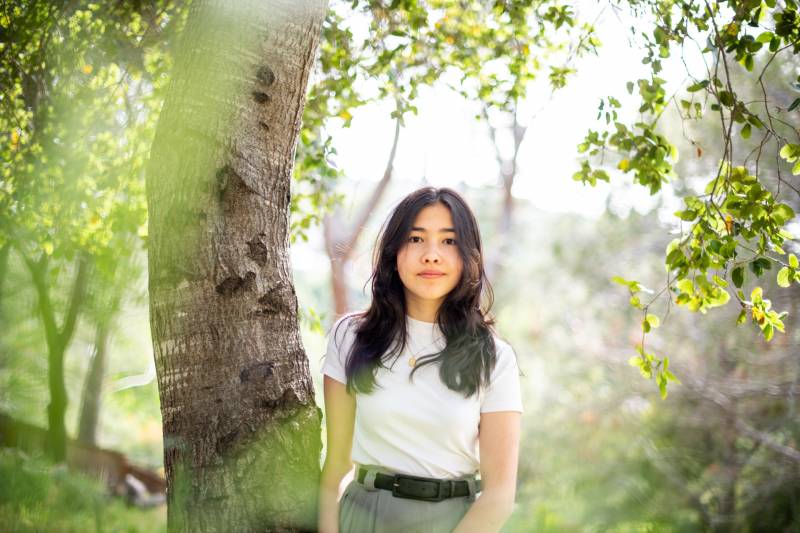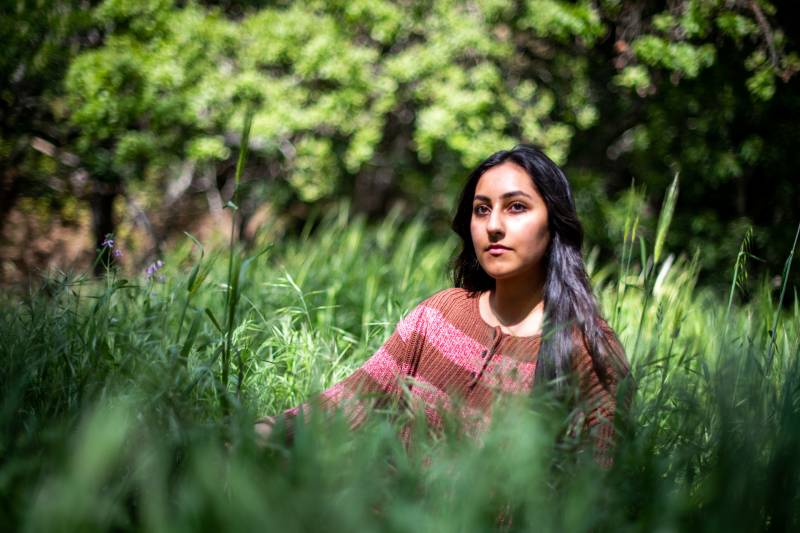Frightened by a warming world, frustrated by inaction and armed with science, teenagers in San Mateo County have successfully convinced two of the county’s three high school districts to declare a climate emergency.
The students got district leadership to adopt language from their template, which calls for firm commitments to implement climate action plans.
Energized by youth-led climate movements around the Bay Area, the students, many of whom are part of the San Mateo County Youth Commission’s Environmental Justice Committee, spoke at school board sessions, met with superintendents, petitioned hundreds of students, and sat on districtwide sustainability committees.

“Time is of the essence; the actions we do or do not take now and in the next few years will determine the intensity of climate change and its consequences for generations to come,” one of the declarations begins.
The document goes on to call for an evaluation of all district operations; a commitment to create best practices for powering buildings with clean energy; the identification of areas within the curriculum to discuss climate change; and providing students with workforce training in green jobs.
Last week, the governing board of the Sequoia Union High School District voted 5-0 to adopt a version of the declaration and call on other school boards “to adopt strong efforts to reduce greenhouse emissions.”
“My group and I are thrilled and thankful that the SUHSD board passed this resolution unanimously,” said Katinka Lennemann, 16, who led the campaign. “It’s important that schools follow this trend of increasing climate action, because every single aspect of our society needs to turn toward more sustainable practices as an overall way to combat climate change.”
Atiya Shah, a senior at San Mateo High School and chair of the youth commission’s Environmental Justice Committee, lives in Foster City, where residents in 2018 voted to tax themselves in order to reengineer an eight-mile earthen wall, the only thing standing between them and San Francisco Bay.
Shah says she was motivated by the threat. “This is how climate change is showing up in my life. Time is of the essence,” she said. “If we don’t take action now, things are moving at such a fast rate that it’s really going to affect our future. And people don’t recognize that.”
Shah and her group workshopped their emergency declaration with officials in the San Mateo Union High School District, and the district’s Board of Trustees approved it April 1.

The declaration states that the district will require “immediate and effective action from all district operations,” and it commits to passing an action plan addressing 10 areas impacting the climate, including green buildings and grounds, operations and transportation, air quality and direct greenhouse gas measurements, and clean energy.
The effort has received “a lot of support,” Shah said.
In a message sent to families announcing the declaration, district Superintendent Kevin Skelly wrote: “More needs to be done — the science is clear — we are heating up our world to unsustainable levels.
“Our teaching and family responsibilities are immense,” he continued. “We may not live to see climate change reversed, but we must surely add to our list of endless duties an effort to transmit the knowledge, skills, and values that will give those young people we serve the chance to do so. On we go, dedicating ourselves to environmental stewardship.”
The third high school district, Jefferson Union, has yet to sign on. Shah says the committee reached out to the district but has yet to hear back.
Superintendent Toni Presta said administrative officials have yet to receive a draft of the declaration and do not yet have an official position on the issue but “are definitely open to considering passing the resolution.”
‘Most Exposed Throughout Their Lives’
The students crafted the declaration in partnership with an environmental literacy initiative at San Mateo County’s Office of Education. This is not the first time the youth commission has engaged in climate politics. Several years ago, it wrote letters encouraging the county’s board of supervisors to support sea level rise legislation.
The commission “takes a unique interest in the effects that sea level rise will have on San Mateo County’s youngest residents,” the group wrote in a letter.
The students, which included Vikram Seshadri, a junior at Menlo School in Atherton and Eeshan Bhat, now in engineering classes at UC Berkeley, noted that a county vulnerability assessment identified several dozen schools that could be impacted by flooding, most of which are located disproportionately in poorer communities of color.
“Youth represent the demographic, which will be most exposed throughout their lives to the mounting issues created by sea level rise,” the group wrote. “Tackling these problems in the present and creating opportunities for youth to be involved in that process are important steps towards preparing for the future.”
Maram Ahmed, a junior at Mills High School and a co-vice chair of the Environmental Justice Committee, says she has asthma that’s been exacerbated by recent wildfires. “It keeps getting worse and worse,” she said. “There are so many things that I used to be able to do that I can’t anymore.”
Lilian Chang, a high school senior and current co-vice chair of the Youth Commission, has also been motivated by “the very visible wildfires and their effects.”
She hopes the commission can start a conversation and create accountability for schools, ensuring they achieve their climate goals.
“We’ve worked with the county, we worked with school districts,” she said. “It is important that we just have a united front in fighting climate change. We’re starting to get prepared for those consequences, and this is how we’re going to get through it.
“All of us are really proud of this work,” she said.
